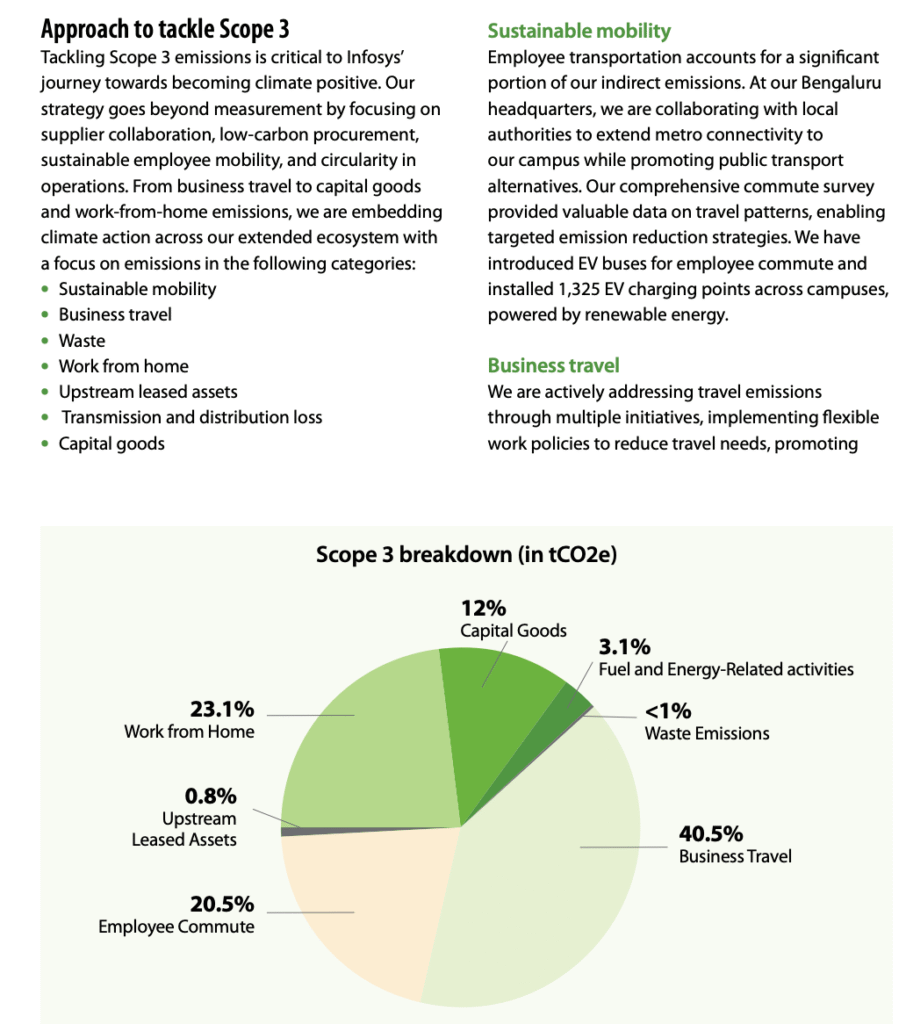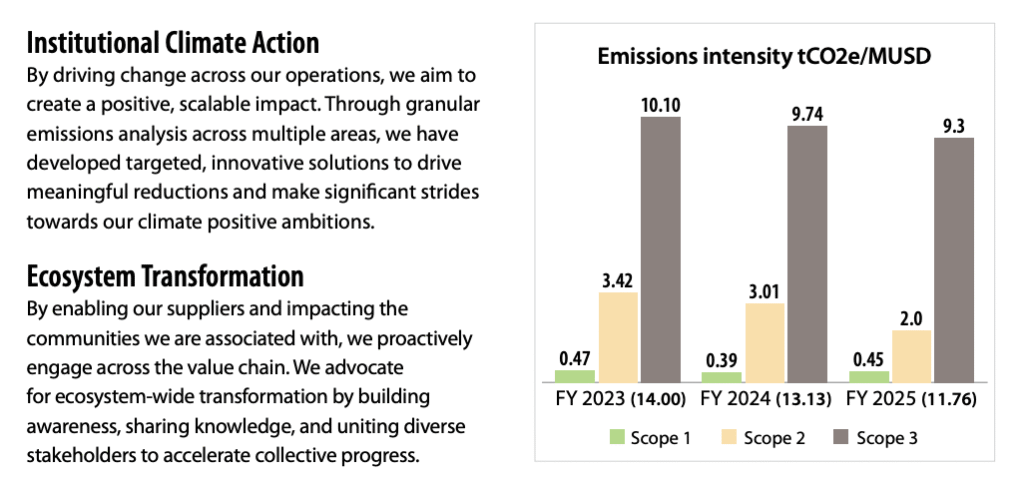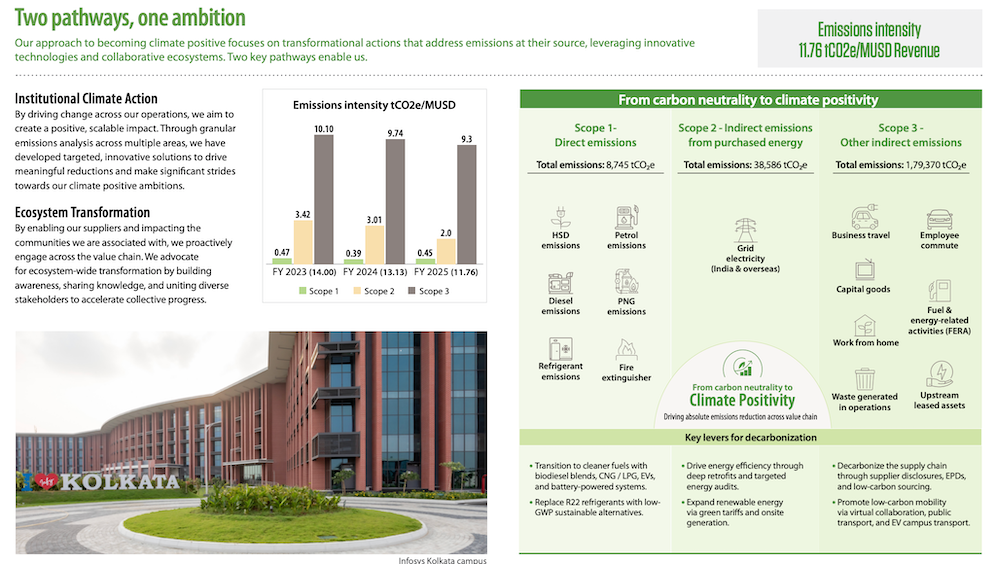A Step-by-Step Guide By ESGPro Mastery Institute
Emissions reporting is one of the most critical aspects of sustainability disclosures. It sits at the heart of climate change accountability and is required under global frameworks such as GRI 305: Emissions, ISSB, CDP, and BRSR (India).
This guide breaks down the 7 steps to help Indian companies measure, disclose, and improve their emissions reporting.
Step 1: Understand Why Emission Reporting Matters
- Climate change risks (physical & transition) directly affect business continuity.
- GRI 305 requires disclosure of Scope 1, 2, and 3 GHG emissions, intensity ratios, and reduction initiatives.
- Benefits include:
📌 Example: Infosys became carbon-neutral in 2020, ahead of schedule, by tracking and reporting emissions across operations and supply chain. However, Climate change target remains their most priotised Double Materiality Assessment (DMA) focus.

Step 2: Define Goals, Targets & Scope
- Goals: Achieve net zero, reduce intensity, or decarbonise supply chain.
- Targets:
- Scope:
📌 Example: Mahindra & Mahindra tracks Scope 1 & 2 for manufacturing plants, and reports Scope 3 categories such as logistics and raw materials.
Step 3: Gather & Organise Data
- GRI 305: Emissions 2016 Standard requires data on:
- Data Sources:
- Emission Factors: Use India-specific emission factors (Central Electricity Authority, India GHG Program).
📌 Infosys: Publishes annual renewable energy % and GHG intensity per FTE.

Step 4: Analyse the Data
- Identify hotspots (e.g., energy-intensive plants, logistics).
- Measure progress against past years.
- Benchmark intensity ratios (e.g., kg CO₂/vehicle, tCO₂e/₹ revenue).
- Visualise trends with dashboards and charts.
📌 Infosys 2022 Sustainability Report chart on emissions reduction trajectory.

📌 Mahindra 2023 Integrated Report graph showing energy & Scope 1/2 reductions.

Step 5: Compile the Report
A strong GRI 305 disclosure should include:
- Executive Summary – emissions profile & goals.
- Methodology – calculation methods, emission factors used.
- Results – Scope 1, 2, 3 totals, GHG intensity ratios.
- Reduction Efforts – energy efficiency, renewable adoption, offsets.
- Future Commitments – net zero pathways.
📌 Example: Infosys explains its journey to 100% renewable electricity by 2030.
📌 Example: Mahindra sets science-based targets for automotive value chain.
Step 6: Validate & Share
- Internal cross-checks by finance, sustainability & operations teams.
- Third-party assurance for credibility (Infosys reports externally assured data).
- Share via:
- Sustainability Report / Integrated Report.
- CDP disclosure.
- BRSR filing (India).
- Company website & investor decks.
Step 7: Implement Feedback & Iterate
- Compare progress with industry peers.
- Engage suppliers to improve Scope 3 accuracy.
- Update emission factors annually.
- Set ambitious next-cycle targets.
📌 Infosys: Annual refinements in Scope 3 methodology for employee travel.
📌 Mahindra: Expands reporting to cover raw material emissions.
Take the Next Step
GRI 305 reporting is technical — but learnable. We’ll teach you how to calculate, disclose, and align with BRSR, ISSB & CDP using real case studies from Infosys and Mahindra.
Join our 2-Day ESG Reporting Program this weekend — starting Saturday 6 PM.
🎟️ Special Price: Only ₹99 ($2) if you enroll today 👉 esgproinvest.com/gri
Seats are limited. Start your climate reporting mastery now.

